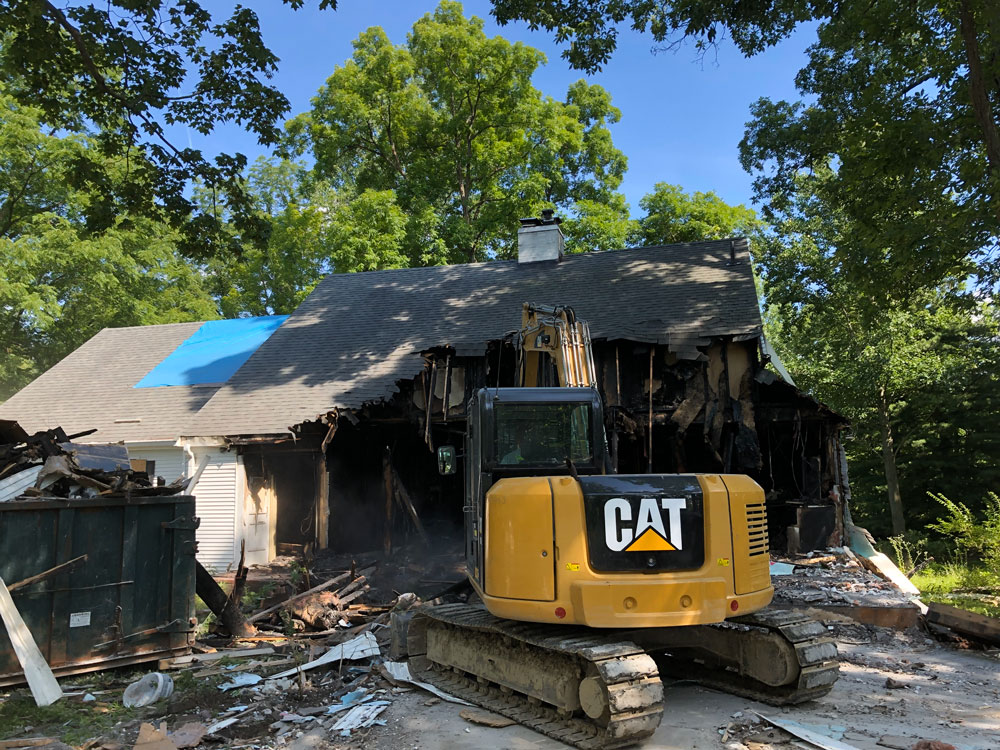
Typical House Demolition Quick Facts:
- Takes about 3-5 days to complete
- Produces about 200-300 yards of debris or 6-10 30 yard dumpsters which are disposed of in a landfill
- “Hard fill” and “back fill” refer to masonry-type materials from the site used to fill the basement void. The filled space is then covered over with clean soil from around the site (if elevation permits) or the soil (clean fill) is trucked in. This technique is commonly used to decrease expenses and to fill the void when the newly cleared site has no future building plans.
- With a complete demo, all material (brick, block, cement, footers, chimneys, slabs and the house) is completely removed from the property and disposed of. For some complete demos, the basement void can be filled, compacted (and certified by a soil engineer if needed) and leveled with the undisturbed surrounding soil for future use and building(s).
A skilled demo contractor can handle most of these items.
Before You Begin
If you are considering a demolition project, please take into account the following considerations and requirements:
- A demolition permit from the city or county may be required. Some permits require a signed affidavit from the land owner stating demo intentions, and inspection upon completion. The inspector checks that the site is safe (clear and clean). A demolition contractor can acquire the necessary permit, however, they may also need the affidavit from the land owner.
- An asbestos inspection and possible abatement, may be required, depending on future use of site; local rules apply.
- Land/homeowner must have natural gas disconnected by gas company. This can take upwards of 45 days.
- Land/homeowner must have the electric disconnected by the power supplier company
- Land/homeowner must notify water supplier of abandonment
- Is there propane (above ground or underground tank) company owned or owned by land/homeowner?
- Is there a fuel oil tank (in ground, in basement or outside)?
- Will the septic be reused, abandoned, or collapsed? A permit may be required to abandon, in which case a septage hauler will be required to pump the tank sludge and water. The hauler can provide a septage pumping report form stating amount pumped and location of disposal.
- Central air on the house with an outside a/c unit may require an HVAC company to recover the refrigerant before the unit can be removed.
- A house with a sewer line would have the sewer line capped and marked in the ground
- Seed and straw/mulching is typically required to pass inspection.
